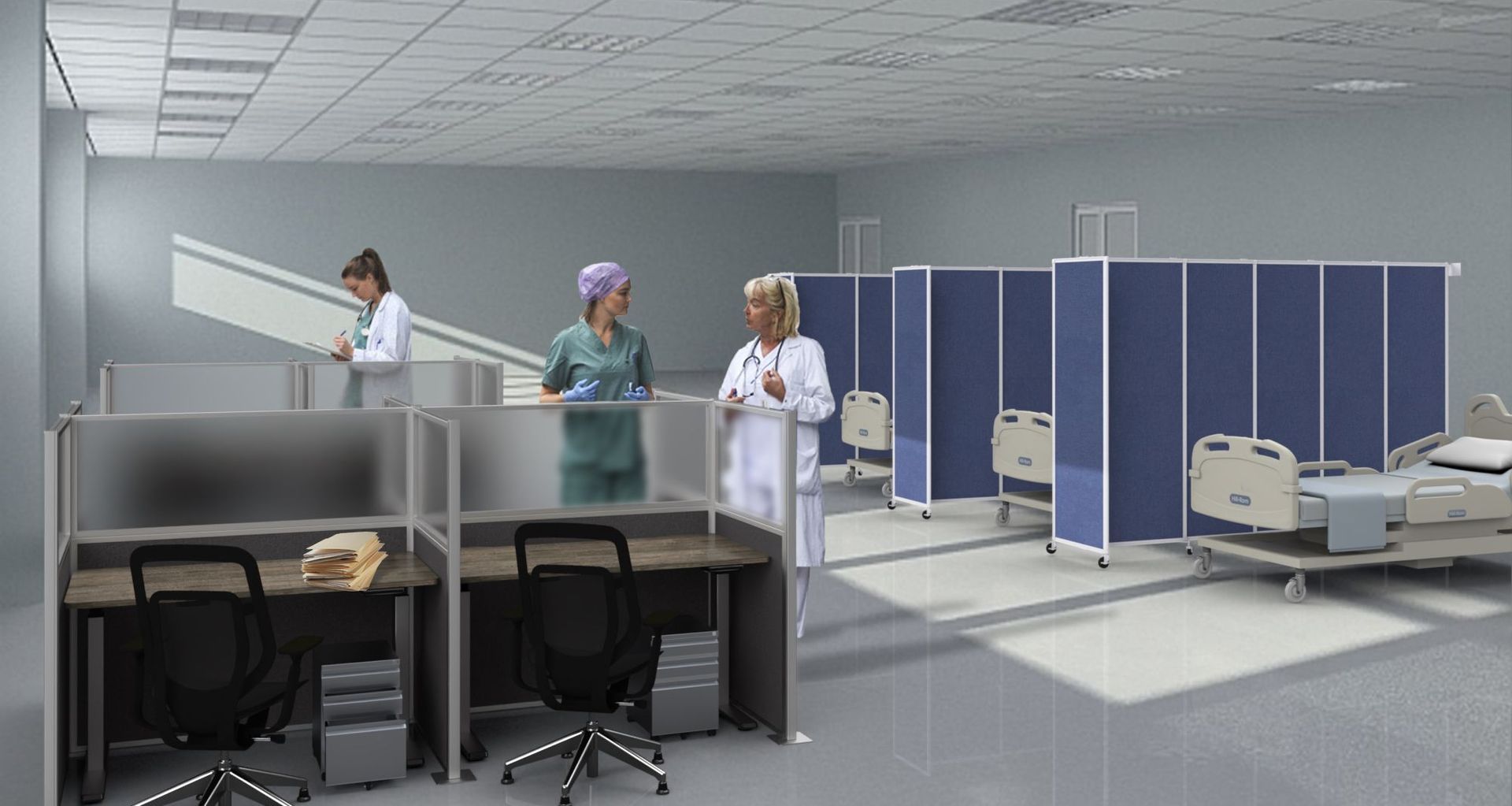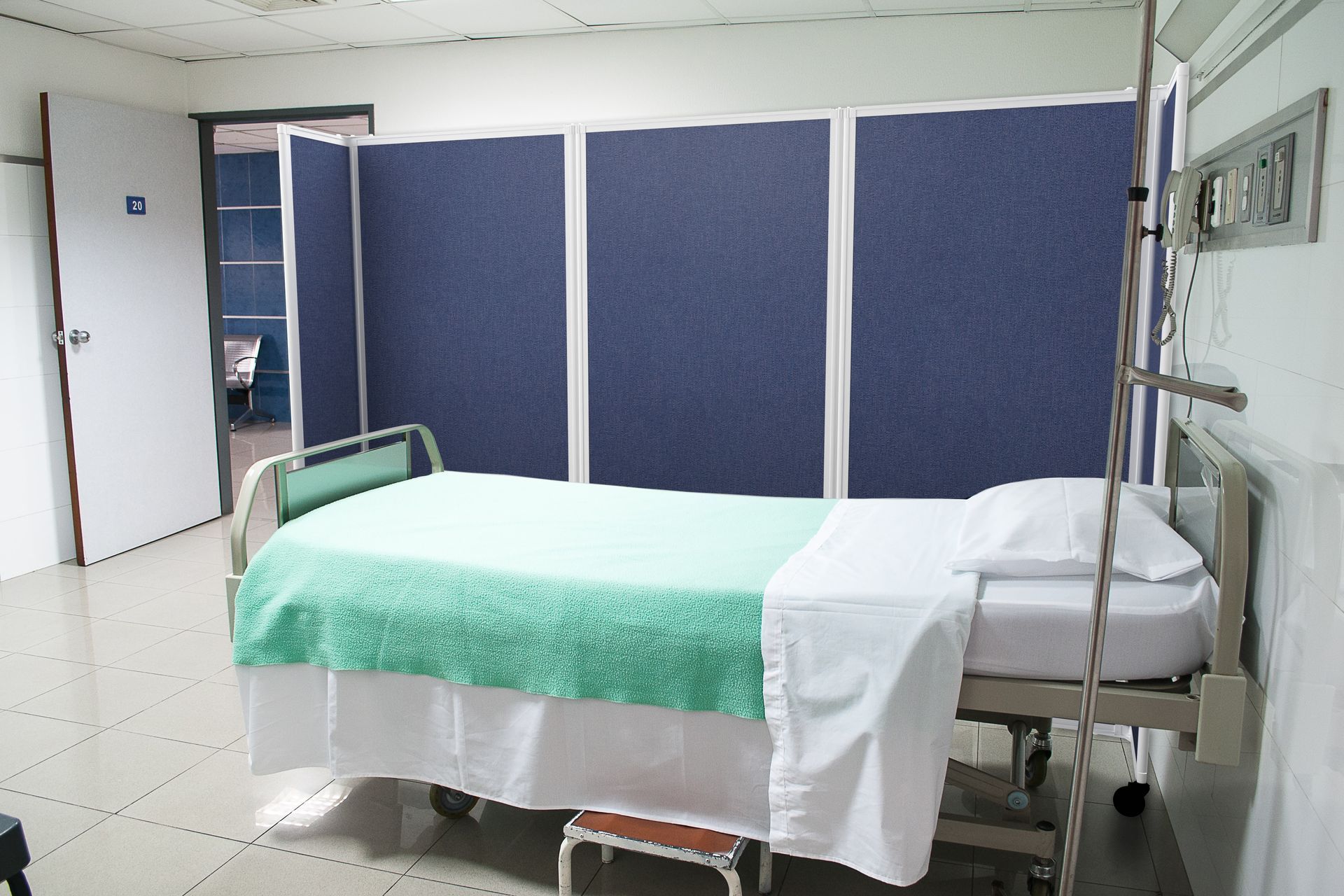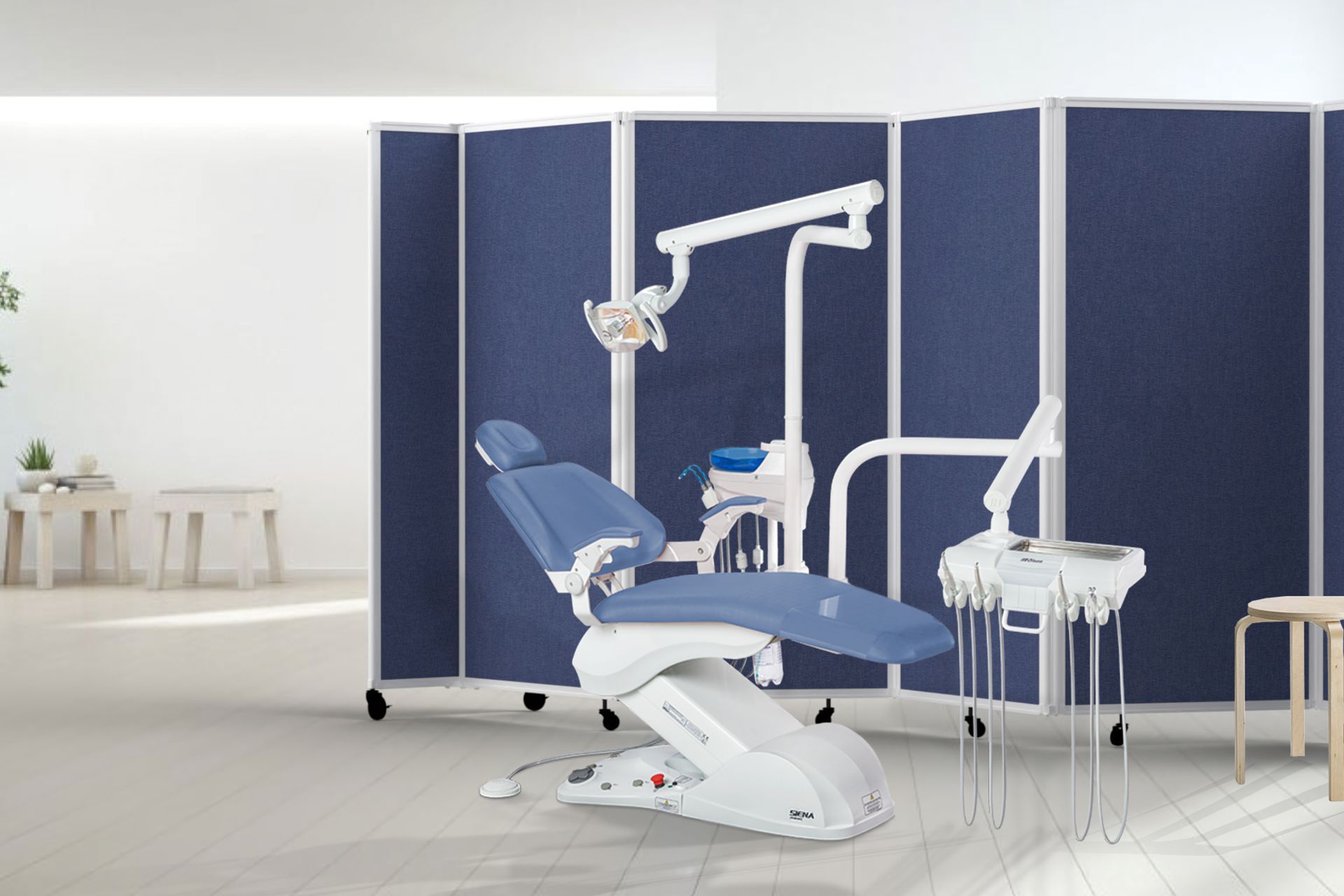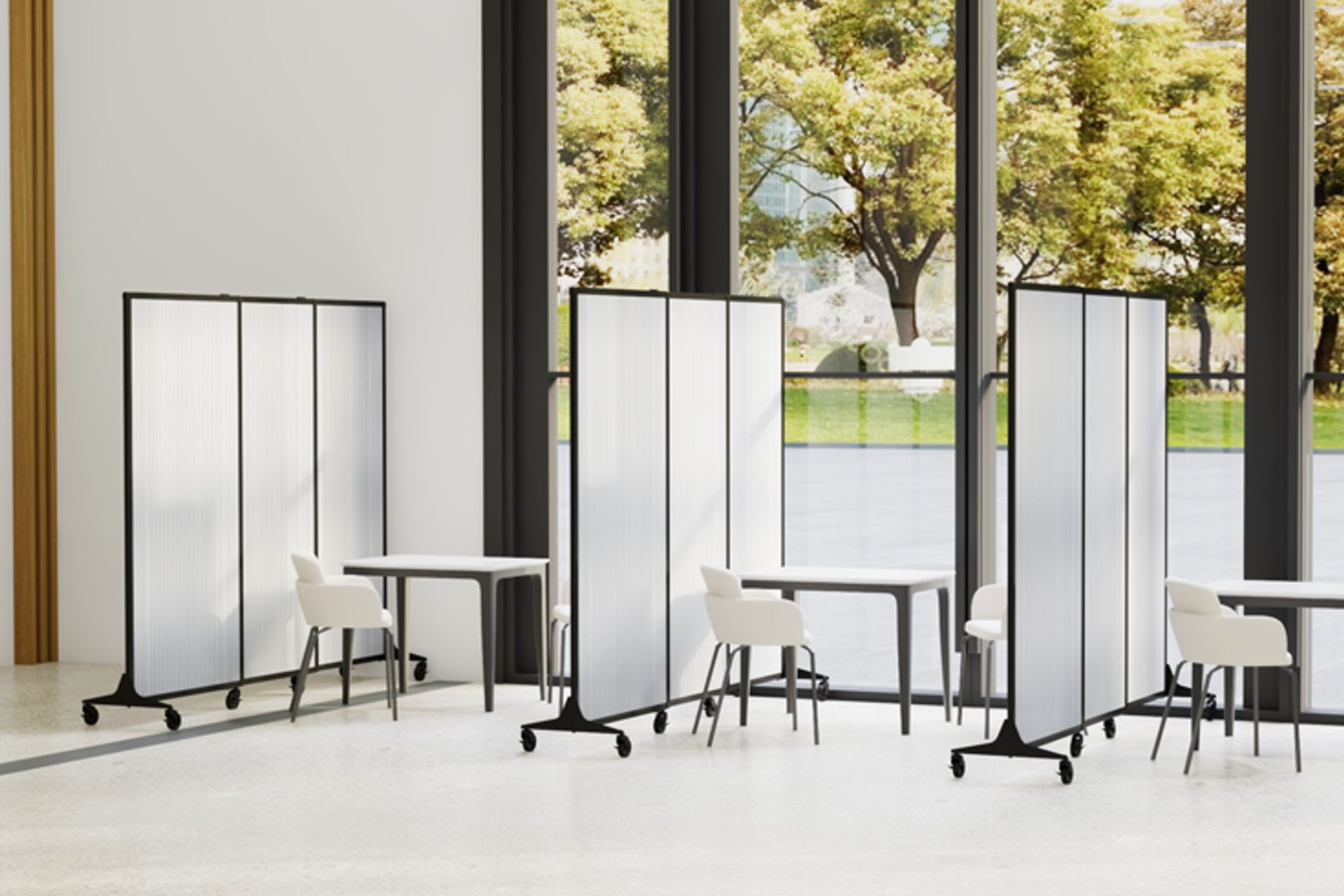Beyond the Curtain: Rethinking Privacy in Modern Healthcare Spaces

For decades, fabric curtains have been the go-to solution for privacy in hospitals and clinics. They’re quick to install, easy to move, and familiar to staff and patients alike. But as infection control, acoustic comfort, and patient experience evolve, traditional curtains are facing renewed scrutiny.
Infection Control and Hygiene
Research shows that privacy curtains quickly accumulate bacteria. In one study, 92% of newly hung curtains tested positive for MRSA within a week. Another found they would need decontamination every three days to remain hygienic.
The Australasian Health Facility Guidelines (AusHFG, 2025), developed with Te Whatu Ora, now call for impervious, easily cleaned surfaces in all clinical areas. This has prompted hospitals to explore alternatives that align better with infection-prevention protocols; including modular partition systems made from smooth, non-porous materials.

Acoustic Privacy and Patient Wellbeing
Noise is one of the most common patient complaints in healthcare settings. Studies link excessive sound levels to higher stress, disrupted sleep, and lower satisfaction.
While “enhanced acoustic” curtains offer small improvements, they fall short of delivering real speech privacy. Solid or acoustic partitions can absorb and block sound far more effectively, creating calmer and more private spaces. The NHS’s Health Technical Memorandum 08-01 (2021) specifically notes that good acoustics promote dignity and rest; both critical for recovery.
Solid or acoustic partitions can absorb and block sound far more effectively, creating calmer and more private spaces.
Flexibility and Function
Unlike track-mounted curtains, modular dividers can be folded, moved, or reconfigured instantly.
When made with polycarbonate panels surfaces are compatible with hospital disinfectants and can be wiped clean between patients. This versatility became particularly important during the pandemic, when clinics and testing centres needed to reshape their layouts almost overnight.

The Human Factor
Healthcare design today is about more than compliance; it’s about creating environments that support wellbeing.
Patients often describe curtain-divided wards as noisy or impersonal, while solid or acoustic partitions give spaces a calmer, more deliberate feel.
This isn’t just aesthetic. Evidence-based design principles from the World Health Organization (2021) and NHS HTM 08-01 show that spatial privacy, acoustic comfort, and visual order all contribute to recovery and staff performance.
A Balanced View
Curtains still have a place — particularly in low-acuity, short-stay, or non-clinical areas.
But in environments where infection prevention, flexibility, and patient comfort are priorities, solid partitions are rapidly becoming the preferred choice.
As hospitals and healthcare providers design for the future, the decision between curtains and partitions is no longer just about cost. It’s about creating safer, cleaner, and more human-centred environments; one wall at a time.
About Versare NZ
Versare NZ designs and supplies modular room dividers and acoustic partition systems used across healthcare, education, and workplace environments.
Our NZ-made solutions are built for hygiene, flexibility, and sound control; helping hospitals and clinics create cleaner, quieter, and more adaptable spaces.


References
- Ohl, M. et al. (2012). Multidrug-resistant organisms on hospital privacy curtains. American Journal of Infection Control, 40(9), 904–906.
- Al-Jawaheri, N. et al. (2021). Bacterial contamination of hospital privacy curtains and decontamination protocol. Infection and Drug Resistance, PMC8575993.
- Australasian Health Facility Guidelines (2025). Part D – Infection Prevention & Control. https://www.healthfacilityguidelines.com.au
- Busch-Vishniac, I. et al. (2005). Noise in hospitals: a review. Journal of the Acoustical Society of America, 118(6).
- NHS England (2021). Health Technical Memorandum 08-01: Acoustics.
- Goedecke, M. et al. (2023). Cost impact of antimicrobial privacy curtains. American Journal of Infection Control, PMC10315769.
- Health Care Without Harm (2022). Sustainable Healthcare Design Report.
- World Health Organization (2021). Design Principles for Health Facilities.
